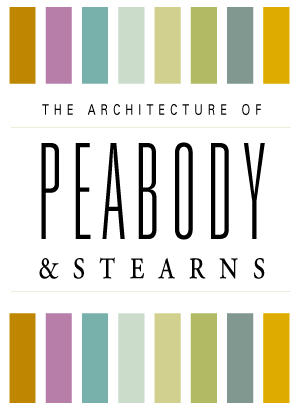RESORT ARCHITECTURE
Peabody and Stearns began their practice at a time when American resorts were blossoming. Industry and financial markets were creating great wealth, part of which found its way into the developing leisure market. Expanding railroad networks opened new territories for settlement and railroad entrepreneurs designed destination resorts to encourage railroad travel. The literature of the time fed into the popularity of resort life and the concept of the cottage or country house: Andrew Jackson Downing anticipated the market with the publication of The Architecture of Country Houses in 1850, Charles Sweetser published The Book of Summer Resorts in 1868, and Mariana Griswold Van Rensselaer’s series “American Country Houses” appeared in the Century Magazine in 1886, to name only a few.
Peabody and Stearns designed country houses and cottages throughout the United States, primarily on the East Coast, from Maine, Massachusetts and Rhode Island, to New Jersey and Georgia, but also reaching inland to West Virginia and Colorado. They created over 80 resort homes, of which approximately 50 are extant. Designs ranged from Shingle Style, with Queen Anne, to Colonial Revival, to Scandinavian Revival, to a rustic log cabin. They built residences, carriage houses, gate houses, and boat houses, yacht clubs and a casino. Most of these commissions are included in Peabody and Stearns: Country Houses and Seaside Cottages, published in 2010; see the tab for The Book for more information.






